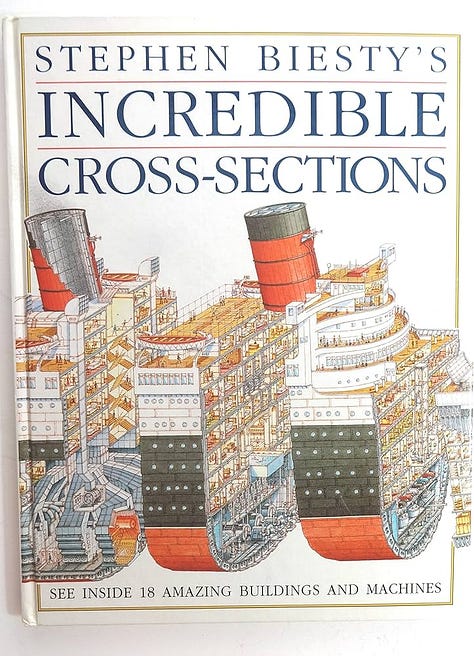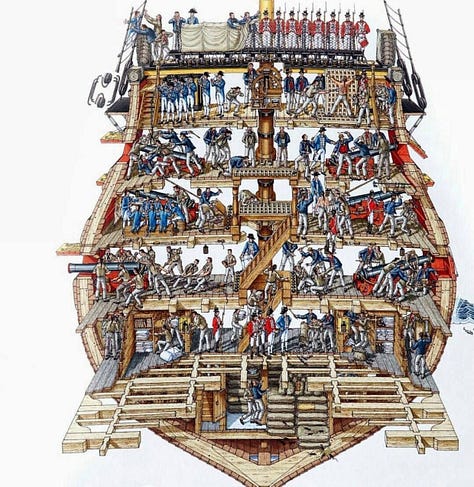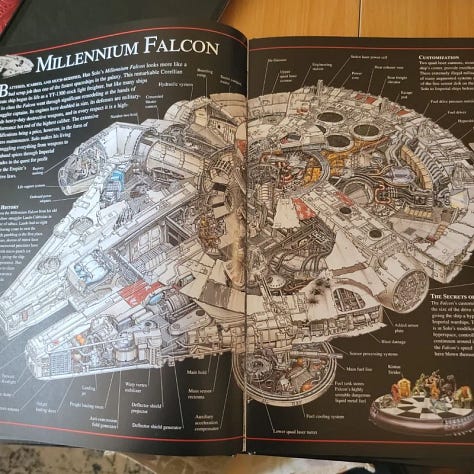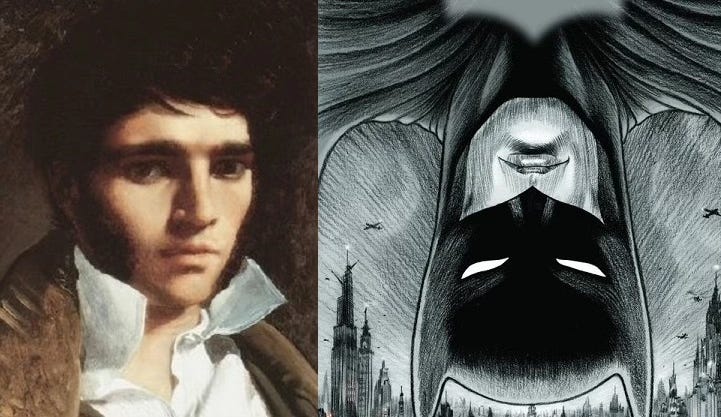This is the third piece of my short series about the boys’ literacy work I’ve been doing (subscribe so you don’t miss a post). Over the course of an academic year, I visited Ferndown Upper School multiple times to talk about books with different groups of boys aged 13-18.
Here’s the first piece introducing the problem in broad terms.
This second piece explores how freedom is embedded as a key principle throughout the sessions, enabling the boys to reconsider how they see books.
Books to get Boys Into Books (Without Forcing It)
Earlier this year, a friend asked me for some book recommendations for her 6 year old son. She said,
‘He’s right here to be grabbed by reading, I can tell. I just don’t know what to give him.’
Boys are not inherently opposed to reading books. Giving them the right ones could set them off exploring for a lifetime.
Here are some ideas, some backed by research, most by my experience and opinions, for hooking boys up with books.
And my friend’s son? He’s reading voraciously. I’ll tell you what we gave him.
Make Them True
There’s a reason history podcasts are so popular. Anyone who’s had their war chewed off by someone’s uncle at the dinner table knows older men love history.
But young men do too.
For my friend’s son, who loves archeology and has a grandad with an encyclopaedic knowledge of military lore, it made sense to give him something real to get started.
So we sourced some secondhand Ladybird classic books about historical figures like Alexander the Great and Captain Scott to get him going. Slim books about epic endeavours that really happened. He is obsessed already.
Stories of the olden days are really compelling to young boys. Don’t overlook them because they’re ancient history.
Make Them Visual (But Not Babyish)
One thing that works so well about those old Ladybird books is the illustration style. The covers are heroic, sweeping and timeless. They feel serious but approachable.
Books for young people have become very babyish and cutesy in their illustrative style. Beyond early childhood, boys want something epic and cool, not cute. When you were young, did you enjoy being babied by adults? I doubt it.
We do judge books by their covers and if the artwork respects the boys, they’ll open them up.
And if the style is right, they’ll even dive into illustrated versions of the classics. (Ted Gioia has a nice article about a version of this called Classics Illustrated.)
I remember being obsessed with a graphic version of The Iliad as a kid. I read it over and over — not because it was “good for me,” but because it felt good. Like I’d found a secret entrance to a bigger world.
I was grabbed by myths as a kid, reading a beautifully drawn version of The Iliad and The Odyssey over and over again. It’s one of the all time tales, epic yet endlessly readable.
Last year I picked up a graphic novel called Templar by Prince of Persia creator Jordan Mechner that used history and cool visuals to tell a compelling tale of the fall of the Knights Templar. There are all kinds of things out there if you look for them.
Try this:
Graphic novel versions of Sherlock Holmes, Shakespeare, Orwell, or the Greek myths.
For the older boys, try Watchmen for big themes in superhero wrapping.
Show Them How It Works
When I quieted an unruly class by talking to them about the Hero’s Journey storytelling structure, I learned something important.
Boys like to know how things work.
And given how stories are everywhere, and boys are already well-versed in all kinds of lore from other media, being given the keys to understanding their structures is incredibly compelling to them. Stories become a code for them to crack, a game to play, and boys really like playing games.
Recently I remembered a series of books from my childhood that take this idea of deconstructing the world and make it delightful.



Stephen Biesty’s Incredible Cross-Sections broke down superstructures like castles and ships in amazing detail, with beautifully drawn cool visuals and easter eggs that made them endlessly revisitable.
I recently bought a Star Wars version that breaks down how the vehicles of that very realised world work. There are huge possibilities in this vein for younger readers that publishers could explore further.
Publishers could expand on work like Biesty’s, bringing it up to date and anchoring it in culture that would grab boys’ interest and channel it straight into the world of books.
(I would be very happy to work on this with someone – I’ve got a lot of ideas)
These schematics are stories and they’re the kind of stories that can ignite all kinds of passions and interests.
Anchor To Their Worlds
The hero’s journey is the underpinning to not only our myths, legends and canonical stories but to the stories the boys interact with now, including the lives of their favourite athletes. Given football is the world’s foremost cultural exchange, the language spoken by everyone, it’s crazy we underestimate the power of this commonality.
If a boy loves football, give him a book that loves football.
I saw someone say recently, ‘you’re never going to browbeat men into reading romantasy’, and it’s the same with boys. You have to meet them where they are and the world of football is their most common playground.
Try this:
Biographies of athletes they already idolise.
YA books featuring sport.
More challenging adult fiction like Kick The Latch by Kathryn Scanlan or Earth by John Boyne.
If you connect to what they already love, you help them build a bridge to the world of books rather than make them leap a chasm.
Soft Launch the Canon With Superheroes
Away from football and back to the world of fiction, our modern mythological heroes are the superheroes.
Spiderman and the Marvel gang, Batman and Superman, all of them grab kids when they’re toddlers with the cutesy versions (Lego et al) and let them grow up with the various takes all the way through to adulthood.
There are loads of these stories to give to young boys but it’s also possible to…
Draw the parallels with those stories and the classics.
The Count of Monte Cristo is Batman. Both are wronged men, transforming themselves into harbingers of vengeance, agents of providence in disguise, wearing masks and concealing their pain.
These stories aren’t separate. Literature has always been full of masked men and buried pain, well before superheroes became our cultural touchstones. Sometimes our classic stories just need a reframe.
There are plenty of books out there for boys to read and if you find the right way in, they will understand why they should bother exploring them. But as Antoine De Saint-Exupéry said,
If you want to build a ship, don't drum up the men to gather wood, divide the work, and give orders. Instead, teach them to yearn for the vast and endless sea.
We can’t force boys into reading. We need to show them the breadth there is in books, the possibility, the power and perhaps most importantly, the fun. Then they can choose their own adventure.
(If you have any books that have proved popular with boys, feel free to drop a comment.)








